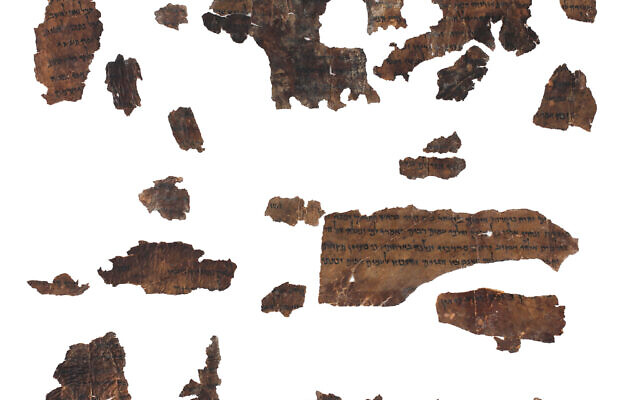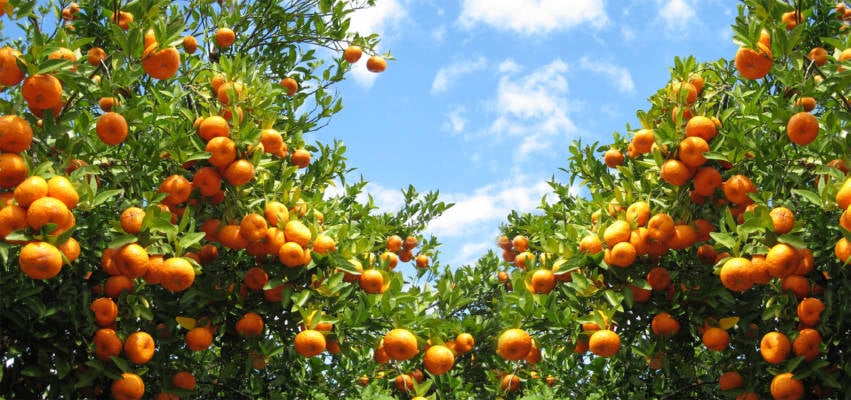By characterizing the genetic relationships between different scroll fragments, the researchers were able to discern important historical connections.
By United with Israel Staff
An interdisciplinary team from Tel Aviv University – led by Prof. Oded Rechavi of TAU’s George S. Wise Faculty of Life Sciences, Prof. Noam Mizrahi of TAU’s Department of Biblical Studies, in collaboration with Prof. Mattias Jakobsson of Uppsala University in Sweden, Pnina Shor and Beatriz Riestra of the Israel Antiquities Authority,, Prof. Dorothee Huchon-Pupko of TAU’s George S. Wise Faculty of Life Sciences and Prof. Christopher E. Mason of Weill Cornell Medicine – has successfully decoded ancient DNA extracted from the animal skins on which the Dead Sea Scrolls were written.
The Dead Sea Scrolls refers to some 25,000 fragments of leather and papyrus discovered as early as 1947, mostly in the Qumran caves but also in other sites located in the Judean Desert.
The research, conducted over seven years, is published as the cover-story in the journal Cell and sheds new light on the Dead Sea Scrolls. The results indicate that 2,000 years ago, Jewish society was open to parallel circulation of diverse versions of scriptural books. The findings support the notion that for contemporaries, the most important aspects of the scriptural text were its content and meaning, not its precise wording and orthography.
“There are many scroll fragments that we don’t know how to connect, and if we connect wrong pieces together it can change dramatically the interpretation of any scroll. Assuming that fragments that are made from the same sheep belong to the same Scroll, it is like piecing together parts of a puzzle,” explains Prof. Rechavi.
The Scrolls contain, among other things, the oldest copies of biblical texts. Since their discovery, scholars have faced the breathtaking challenge of classifying the fragments and piecing them together into the remains of some 1,000 manuscripts, which were hidden in the caves before the destruction of the Second Temple in 70 CE.
Researchers have long been puzzled as to the degree this collection of manuscripts, a veritable library from the Qumran caves, reflects the broad cultural milieu of Second Temple Judaism, or whether it should be regarded as the work of a radical sect (identified by most as the Essenes) discovered by chance.
“Imagine that Israel is destroyed to the ground, and only one library survives – the library of an isolated, ‘extremist’ sect: What could we deduce, if anything, from this library about greater Israel?” Prof. Rechavi says.
“To distinguish between Scrolls particular to this sect and other Scrolls reflecting a more widespread distribution, we sequenced ancient DNA extracted from the animal skins on which some of the manuscripts were inscribed. But sequencing, decoding and comparing 2,000-year old genomes is very challenging, especially since the manuscripts are extremely fragmented and only minimal samples could be obtained.”
“We attempt to integrate present scientific and technological advances minimizing intervention while enhancing physical and textual research on the scrolls,” says Pnina Shor, founder of the Dead Sea Scrolls Unit at the Israel Antiquities Authority.
To tackle their daunting task, the researchers developed sophisticated methods to deduce information from tiny amounts of ancient DNA, used different controls to validate the findings, and carefully filtered out potential contaminations. The team employed these mechanisms to deal with the challenge posed by the fact that genomes of individual animals of the same species (for instance, two sheep of the same herd) are almost identical to one another, and even genomes of different species (such as sheep and goats) are very similar.
For the purpose of the research, the Dead Sea Scrolls Unit of the Israel Antiquities Authority supplied samples – sometimes only Scroll “dust” carefully removed from the uninscribed back of the fragments – and sent them for analysis by Prof. Rechavi’s team: Dr. Sarit Anava, Moran Neuhof, Dr. Hila Gingold and Or Sagi.
To prevent DNA contamination, Dr. Anava traveled to Sweden to extract the DNA under the meticulous conditions required for ancient DNA analysis (e.g. wearing special full-body suits) in Prof. Jakobsson’s paelogenomics lab in Uppsala, which is equipped with cutting-edge equipment.
According to Prof. Rechavi, one of the most significant findings was the identification of two very distinct Jeremiah fragments.
“Almost all the Scrolls we sampled were found to be made of sheep skin, and accordingly, most of the effort was invested in the very challenging task of trying to piece together fragments made from the skin of particular sheep and to separate these from fragments written on skins of different sheep that also share an almost identical genome,” says Prof. Rechavi.
“However,” Rechavi continues, “two samples were discovered to be made of cow hide, and these happen to belong to two different fragments taken from the Book of Jeremiah. In the past, one of the cow skin-made fragments was thought to belong to the same Scroll as another fragment that we found to be made of sheep skin. The mismatch now officially disproves this theory.
“What’s more: Cow husbandry requires grass and water, so it is very likely that cow hide was not processed in the desert but was brought to the Qumran caves from another place. This finding bears crucial significance, because the cow hide fragments came from two different copies of the Book of Jeremiah, reflecting different versions of the book, which stray from the biblical text as we know it today.”
Prof. Mizrahi explains further: “Since late antiquity, there has been almost complete uniformity of the biblical text. A Torah scroll in a synagogue in Kiev would be virtually identical to one in Sydney, down to the letter. By contrast, in Qumran we find in the very same cave different versions of the same book.
“But, in each case, one must ask: Is the textual ‘pluriformity,’ as we call it, yet another peculiar characteristic of the sectarian group whose writings were found in the Qumran caves?”
Yet Undiscovered Caves?
Since most of the scrolls were found to be written on sheep skin, the team had to find a way to distinguish “in higher resolution” between the very similar genomes of different sheep.
“Mitochondrial DNA can tell us whether it is a sheep or a cow, but it can’t distinguish between individual sheep,” Prof. Rechavi explains. “We developed new experimental and informatic methods to examine the bits of preserved nuclear DNA, which disintegrated over two millennia in arid caves, and were contaminated in the course of 2,000 years, including recently by the people who handled the scrolls, often without the use of gloves.”
Using these methods, it was discovered that all the sampled scroll-fragments written using a particular scribal system characteristic to the sectarian writings found in the Qumran caves (the “Qumran scribal practice”) are genetically linked and differ collectively from other scroll-fragments that were written in different ways and discovered in the very same caves. This finding affords new and powerful tool for distinguishing between scrolls peculiar to the sect and scrolls that were brought from elsewhere, and potentially reflect the broader Jewish society of the period.”
Shor concludes: “Such an interdisciplinary project is very important indeed. It advances Dead Sea Scrolls research into the 21st century and may answer questions that scholars have been debating with for decades. We consider the present project, which integrates both extraction of genetic information from the Scrolls using novel methods together with classical philological analysis, a very significant contribution to the study of the Scrolls.”
According to Prof. Mizrahi, many Scroll fragments were not found by archaeologists, but by shepherds, delivered to antiquity dealers, and only subsequently handed over to scholars.
“We don’t always know precisely where each fragment was discovered, and sometimes false information was given about this matter,” says Prof. Mizrahi. “Identifying the place of discovery is important, because it affects our understanding of the historical context of the findings. For this reason, we were excited to learn that one fragment, that was suspected to originate not from Qumran but rather from another site, indeed had a ‘genetic signature’ that was different from all the other Scrolls found in the Qumran caves sampled for this research.”
But this finding led to yet another enigmatic discovery pertaining to a fragment containing a text from the Book of Isaiah. This fragment was published as a Qumran scroll, but its genetic signature also turned out to be different from other Scrolls in Qumran.
Prof. Mizrahi concludes: “This raises a new curious question: Was this fragment really found in the Qumran caves? Or was it originally found in yet another, still unidentified location? This is the nature of scientific research: We solve old puzzles, but then discover new mysteries.”
REBUILD ISRAELI FARMS DESTROYED BY HAMAS - PLANT TREES!
ISRAELI FARMERS DESPERATELY NEED YOUR YOUR HELP
Hamas tried to destroy everything. Terrorists murdered 1200 innocent Israelis. Join us in planting 12,000 trees of life to honor the victims. Send blessing to the People and Land of Israel.
“…I will ordain My blessing for you…” (Leviticus 25:4,21)
JOIN OUR CAMPAIGN TO PLANT 12,000 NEW FRUIT TREES ACROSS THE LAND OF ISRAEL!




